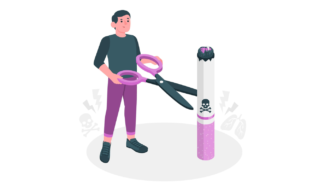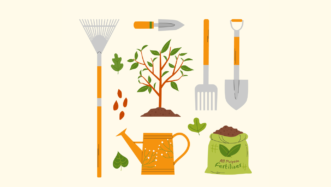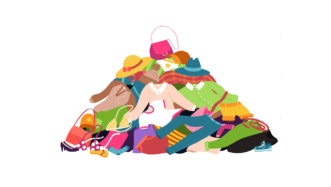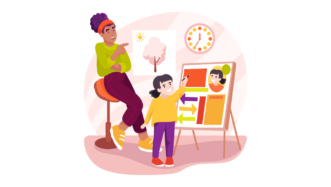LESSON OVERVIEW
The lesson includes a lot of activities that focus on speaking about upcycling, watching and discussing a video and brainstorming upcycling ideas.
B1 / Intermediate45 min
60 minSpeaking ClassUnlimited Plan
This is a Speaking Class worksheet. It includes a variety of tasks that let your students practise their speaking skills. This lesson format does not focus on grammar or vocabulary. Learn more about it here.
SPEAKING ABOUT UPCYCLING & THE VIDEO
Teachers have a choice to start the lesson with a speaking warm-up or a vocabulary activity to activate the words and phrases that might be useful for students in the lesson. The vocabulary activity contains a word cloud and a few questions. Teachers can also start the lesson with a warm-up where students make a list of five things people usually throw away and brainstorm what people can do with them instead. Then, they start speaking about upcycling by reading a few points that describe the concept and trying to come up with a definition.
Next, students watch a video about a cafe owner who is into upcycling and DIY. Afterwards, they compare their definition of upcycling with that in the video. They also read the comments about the video and choose two they agree with the most. Students have to explain their opinion.
MORE UPCYCLING IDEAS
In this part of the worksheet, students continue speaking about upcycling. First, they have a discussion activity during which they talk about the upcycled objects from the video, the difference between upcycling and recycling, DIY projects and handmade things. Then, students read examples of how businesses use upcycling and discuss whether they like the ideas and how companies benefit from upcycling. Students also look at a few objects (e.g. a pair of jeans, a guitar, a bicycle, etc.) and brainstorm the ideas for how to upcycle them. Students can work in pairs or in groups, come up with ideas for a business and present their projects to the rest of the class. As a wrap-up activity of the lesson, students choose one of the thoughts (e.g. Upcycling can be a great hobby…) and add more details about it.
Subscribe to unlock these and many other Standalone lesson lesson plans with the Unlimited planWORKSHEETS













Hi, I just wanted to say thank you for such an engaging lesson. My students loved it. First as a warm-up I brought in some objects and in pairs they had to come up with as many different uses for the object. They had 3 mins. Great Fun!
Yay, that’s amazing! And thanks for sharing a great warm-up idea 🙂
Upycling is a topic that truly inspiring me. Not far from where I live there’s a charming little store where two artists, a skilled craftsman, and a talented visual artist collaborate to craft extraordinary new creations from used and old items. I want to express my gratitude for this lesson. If it’s within your capacity, I would appreciate seeing this topic at a B2-C1 level as well.
Thanks for your comment. I’m glad to hear you like the topic and I hope your students share your enthusiasm 🙂
What a wonderful lesson! Thanks for great ideas!
Thank you for your comment 🙂
I tried this with my students, and unfortunately, the shopkeeper’s accent was just too difficult for them to understand. If the video had properly created English subtitles, rather than auto-generated, it might be OK, but the autogenerated ones are awful: “all capitals and fallen tents…” instead of “all kettles and pots and pans”.
Thanks for your feedback. Sure, the video is not the easiest one, but I believe it’s important to expose students to different accents from the start of their learning paths. Moreover, we don’t check students’ detailed comprehension and just want them to get the main point of the video. And I think the visuals help us with that 🙂
Hi, I love the idea of the lesson. However, I’ve got a question about Ex.6 where the SS look at some ideas of upcycling. The last idea is ‘ a company creates bags, wallets and other accessories from old billboards’, is this not recycling? How is this upcycling, please? Sorry, if my questions is a bit odd:-) Thank you.
Sorry guys, as for my previous questions, of course it is upcycling. I’m was a bit confused with going too deep into these recycling/upcycling/re-euse, etc :-))
Hi! Thanks for your comment 🙂 I think the easiest explanation of the difference is that recycling focuses on breaking down and reusing materials to create new products, while upcycling emphasizes creatively reusing existing items to give them a new purpose and higher value.